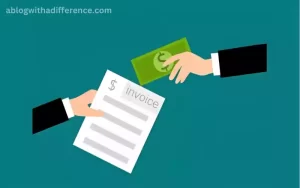Brief overview of Proactive and Reactive Purchasing
Proactive and Reactive Purchasing are two methods businesses can take when procuring goods and services from vendors.
Proactive purchasing is an innovative, strategic method designed to anticipate businesses’ future requirements and plan purchases accordingly. Proactive buying requires businesses to build long-term relationships with suppliers while studying market trends to identify reliable partners who can supply goods and services consistently over time.
Reactive buying requires businesses to use an immediate method of procurement that is short-term in nature, purchasing products and services when needed without taking account of future needs or supplier relationships; ultimately this leads to increased costs, decreased supplier choice options and poorer quality control measures.
At its core, proactive buying involves taking an intentional long-term approach aimed at planning and relationship-building; reactive purchasing on the other hand involves short-term decisions driven by immediate needs or convenience.
Explanation of the importance of purchasing in businesses
Business purchasing is essential, enabling companies to purchase goods or materials outside their organization to fulfill the requirements of customers and satisfy regulatory compliance. Procurement plays an integral part in supply chain management involving procurement, sourcing, logistics, and fulfillment procedures.
Effective purchasing is central to business success for various reasons:
1. Saving Money: By working with strategic suppliers and negotiating lower prices with them as well as employing cost-cutting strategies, businesses can reduce procurement expenditure while expanding margins of profitability.
2. Supplier Relationships: Forging strong partnerships with suppliers can give companies access to superior-quality products with faster delivery times and favorable contract terms.
3. Quality Control: Purchasing departments play a pivotal role in assuring that items and services purchased meet company quality standards, thus increasing customer happiness and retention.
4. Risk management: Implementing effective risk management approaches can assist organizations with mitigating supply chain disruptions or any unexpected incidents that arise in their business operations.
Purchase is an integral business activity that directly influences its profitability, operations and overall performance.
Proactive Purchasing
Proactive purchase refers to purchasing goods or services for purchase before customer orders come through, typically using forecast production plans as the basis of proactive purchase events. Proactive purchasing often doesn’t occur immediately but rather adheres to an established plan in a business’s strategic business plan or forecast for production.
Proactive purchases can offer businesses both advantages and drawbacks. A manufacturing business may opt to purchase materials based on anticipated orders in advance – an economical strategy which also means large amounts can be bought. But this approach could prove risky: should their forecast not pan out or customers opt not to place orders, these purchases could become additional expenses that require extra storage space in your warehouse.

An additional example of proactive purchasing would be acquisition. When companies wish to increase profits at a given point in time, they need the appropriate staff in place and employed in advance for this process. Therefore, proactive purchasing involves employing and training qualified personnel prior to need.
Proactive purchasing has quickly become the go-to method of procurement in today’s business climate, helping organizations improve efficiency and effectiveness within their supply chains, reduce costs while simultaneously raising quality.
At the core of proactive buying are several essential topics:
Production Control. Inventory.
Cost/benefit Analysis, Risk Management, Sourcing and Green Channel Suppliers.
Business Ethics
Reactive Purchasing
Reactive purchases refer to purchases made in response to unanticipated needs or unexpected desires that occur without planning, typically as unplanned business decisions for which there was no budget allocation in the year-end or capital expenditure plan of an organization.
Reactive purchases may incur greater expenses for manufacturers. If the material requirement plan cannot provide all of the materials needed to fulfill scheduled orders, missing materials must be purchased as soon as they become available.

At times, manufacturers must purchase additional supplies from suppliers based on the amount and need of material available to them. Reactive purchases, in certain industries, refers to when businesses make the product or service purchase in response to need.
After customer approval of their purchase has been given, procurement department purchases material required from local suppliers with shorter lead times; thus saving storage space and avoiding stockpiling that might otherwise go unused in factories. Another example for reactive purchases includes immediate employment of employees.
Difference between Proactive and Reactive Purchasing
The main differences between Proactive and Reactive Purchasing include:
1. Methodology: Proactive buying is an approach which seeks to address future requirements with strategic plans made for today and anticipating them; on the other hand, reactive purchasing focuses more on immediate needs with short term solutions focused on ease of use and immediate needs.
2. Relationships with Suppliers: Active purchasing involves building long-term relationships with suppliers while reactive purchases often leave few options and therefore less chance to forge meaningful bonds between vendors and clients.
3. Saving on costs: Proactive buying offers many potential cost savings through bargaining better prices and consolidating vendors to streamline processes; reactive purchasing may result in higher expenses due to limited supplier choices or lack of negotiation ability.
4. Quality Control: Proactive purchasing involves taking measures to implement quality controls to ensure that products and services purchased meet company specifications, while reactive buying often leads to lower quality due to limited planning or relationship building with suppliers.
5. Timeframe: Proactive buying requires extensive planning over an extended time frame while reactive purchasing focuses on meeting short-term requirements.
Proactive purchasing takes an approach centered on long-term planning and developing strong relationships with suppliers to optimize cost savings and quality control, while reactive shopping tends to focus more on immediate needs than long-term strategies, often leading to higher costs and poorer quality control.
Comparison Chart of Proactive and Reactive Purchasing
Here is a comparison chart of Proactive and Reactive Purchasing:
| Factors | Proactive Purchasing | Reactive Purchasing |
|---|---|---|
| Approach | Strategic, long-term planning | Short-term, reactive approach |
| Supplier relationships | Focus on building long-term relationships with suppliers | Limited supplier options, lower supplier relationships |
| Cost savings | Emphasizes cost savings through negotiation, vendor consolidation, and process improvements | Often results in higher costs due to limited supplier options and lack of negotiating power |
| Quality control | Implements quality control measures to ensure products and services meet standards and specifications | Often results in lower quality control due to lack of planning and relationship-building with suppliers |
| Timeframe | Long-term planning horizon | Focused on short-term needs |
Proactive purchasing is a strategic approach that involves planning ahead, building relationships with suppliers, and prioritizing cost savings and quality control. Reactive purchasing on the other hand is a short term Approach that prioritizes immediate needs and Convenience often resulting in higher costs and lower quality control.
The Approach that is best for a business depends on several factors and a Combination of both Approaches may also be appropriate in certain Situations.
Which approach should my business choose?
The ideal business approach depends upon various considerations such as size, industry goals, resources available to it and current issues within its sector. Sometimes taking an aggressive or pro-active stance may prove useful while in others adopting reactive methods may prove more efficient.
Proactive purchasing can often be the superior approach because of its focus on long-term planning, relationship-building with suppliers and cost savings through negotiation and process improvements. Companies using proactive purchasing can anticipate their future needs more easily while simultaneously creating stable supply chains to guarantee high-quality goods or services purchased.
Reactive purchases may be appropriate in certain instances, including emergencies that require prompt responses and need items or services with short lead times.
The optimal strategy should be tailored specifically to the requirements of each company and take into account industry trends, competition, budget and resources. Reactive and proactive purchasing strategies could both prove useful depending on circumstances; using both in an organized and planned fashion would likely yield the greatest return.
What is the relationship between Proactive and Reactive Purchasing?
Purchase methods vary based on a business’s situation. Sustainable companies tend to utilize proactive purchasing approaches while reactive methods may become necessary during emergencies like an inventory shortage.
Conclusion
Successful supply chain management requires a careful balance between proactive and reactive purchasing strategies. An understanding of the advantages and drawbacks associated with various approaches will enable companies to optimize their supply chains in today’s dynamic marketplace and remain cost competitive.